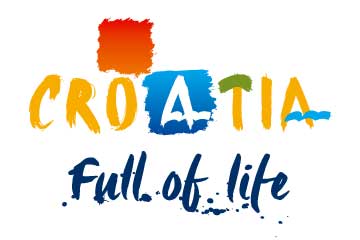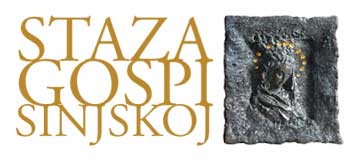6th International Congress of Traditional Music of Southeastern Europe and the Mediterranean
Sinj hosted the 6th International Congress of Traditional Music of Southeastern Europe and the Mediterranean from April 15 to April 20. The themes of the Congress were traditional music, migration and carnival.
The rich program was prepared by the Institute of Ethnology and Folklore, the scientific association of the Institute of Traditional Music, with the support of other institutions. The event was sponsored by the Town of Sinj and hosted by the Chivalric Alka society. Fifty-nine papers were applied for the presentation in the Congress, with the participation of 70 scientists from Europe, The United States and Australia.
Congress was officially opened on April 15 (Sunday) at 20 h at the presentation hall of the Museum Alka of Sinj. Singing and dancing workshops were organized during the gathering, as well as an exhibition of ethnographic objects from the Cetinska krajina region, organized by the Museum of Cetinska krajina Region, and the presentation of the Women Cluster of Southeastern Europe. Traditional Dalmatian klapa music was presented on Tuesday, April 17, with a performance by the klapa Sinj and Neverin in an extraordinary acoustic outer area of the Alka Halls.
A number of lectures and presentations took place in Sikirica Gallery and on April 17 the program was held on Gljev. Traditional songs, dances and customs from the Dalmatian hinterland were presented there, with performances by the Didi s Kamešnice association, HKUD Hrvace, pivača rere from Gljev and pivačica rere from Otok.
On their arrival to this picturesque village underneath Kamešnica, the guests were greeted – as is customary in the Cetinska krajina region – by homemade cuisine. The hardworking members of the cultural association Cetina and the members of the first Businesswomen’s Cluster made arambaše, peka-baked bread, prosciutto, cheese and uštipke, and everything was enjoyed with a glass of wine.
A truly representative program followed. There is a custom in the villages underneath Kamešnica, where over centuries, colorful, noisy, decadent and funny carnival masks have been displayed – a custom recognized and protected by the Ministry of Culture of the Republic of Croatia. The unbeatable and famous Didi s Kamešnice showed the gathered guests, as well as the numerous visitors from the Cetina region, a way to perform carnival customs and chase away the ghosts of winter. The noisy didi with their bells, svati in an old fashion, and the mighty rera amazed all those present outside Gljev school.
The rich ethno-heritage of the Cetinska krajina region has always stood out with its distinctiveness and diversity. A part of its value was presented by the members of the cultural and arts association Peruća from Hrvace, who performed the Cetina kolo dance, famous for its lack of music, while the dancers are sometimes accompanied by a rera group or diple musicians.
The sounds of the old rera have been passed down through generations in the Cetina region; it is sung in full voice, one singer leads while the others follow, or as we say, reraju. The original traditional songs were presented by the male and female rera vocalists from Gljev. Nevertheless, everyone present was surprised by the performance of guests, who managed to immaculately perform a couple of rera and traditional songs. Everyone was amazed by the students of Zagreb’s Academy of Music, who perform together in the Harmonija disonance ensemble, led by the ethnomusicologist dr.sc. Joško Ćaleta. The young students performed again on the same day at the well-known Lokva in Vrpolje, followed by the evening in the Dugopolje church.
At the end of this significant international scientific gathering, Sinj’s mayor Kristina Križanac and one of the organizers dr. sc. Tvrtko Zebec, a senior research fellow at the Institute of Folklore, addressed the crowd.
The Mayor said: the impressions are great, especially this last day at Gljev. This was the first time Sinj was able to host such a scientific gathering, and I believe everyone felt good here and will be able to return to their home countries filled with positive impressions. They leave us with a hope that they will be back and organize manifestations such as this one. I think we showed them all the splendor of our cultural heritage in the best way possible.
Dr.sc. Tvrtko Zebec said that they knew what awaits them in the Cetinska krajina region and that they were not wrong to organize the gathering in these hospitable parts.
We are all thrilled, it has been beautiful these past few days. We have managed to showcase our history and culture to ethno-heritage scientists from all over the world with the example of Sinj and its surroundings. The Museum Alka of Sinj specifically impressed them, and now these amazing Didi s Kamešnice on Gljev, Cetinsko kolo, homemade traditional food, klapa and folk singing… We are truly speechless, kudos to the hosts for their reception and presentation, Zebec told us.
The coordinator of this scientific event, Goran Ugrin, who is originally from Sinj but currently living in Zagreb, made the following statement:
We are more than content, especially the participants of the event who came from abroad. It was enough to see their faces, they were surprised and thrilled when didi danced in these mišine and with bells, then the Cetinsko or the silent kolo, rera, and everything else that has been prepared here. The decision of the Institute of Folklore to organize this great gathering in the Sinj area, has shown to be the right call. We thank everyone who in any way contributed to this great event.










